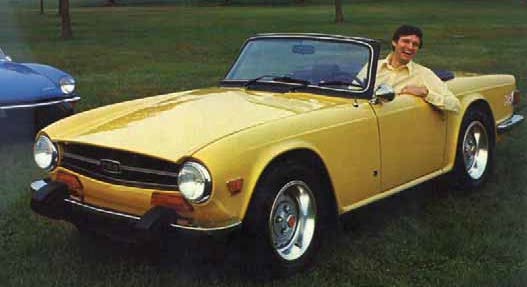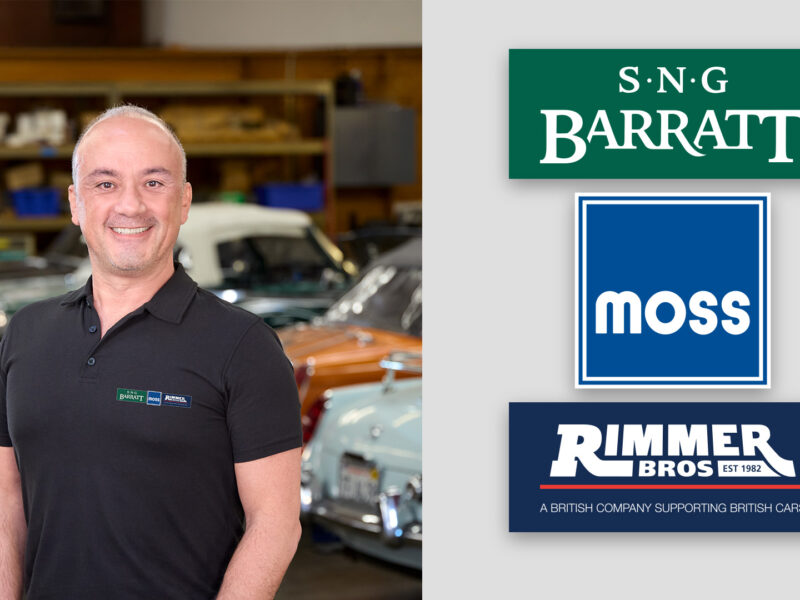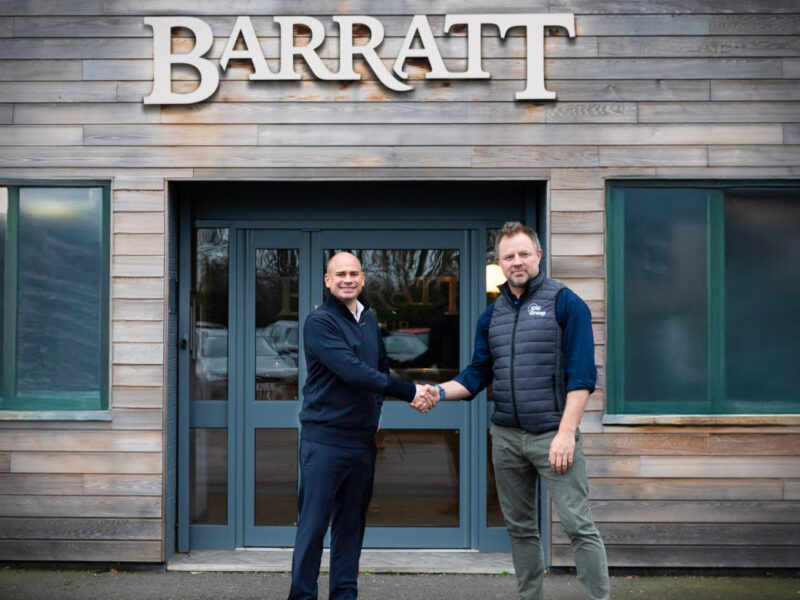By Rick Feibusch
The Triumph TR6 just might be the last mid-sized British roadster bargain. While exceptional examples are in the $15,000 area, very presentable drivers can still be had for about ten grand. This buys a gutsy little roadster with lots of bottom end, a snarly exhaust note, and an interior that can accommodate real American adults. These cars are just coming into their own because younger enthusiasts remember them from their glory days, a full two decades later than most MGTD and TR3 devotees.
While the TR250 and TR6 were engineered and introduced during turbulent times (corporate mergers, British auto-worker strikes, American longshoremen strikes, yearly changes in U.S. smog and safety rules, and the first onslaught of the Japanese auto invasion), they still sold well. American enthusiasts embraced this entertaining, open-topped, modern-looking sportster that still retained traditional road feel.
The late ’60s were an odd time for sporting cars in America. While some American auto enthusiasts opted to buy huge-engined muscle cars, others became interested in the lighter, more agile, highly refined, and stylishly minimal Euro fare. The British interpretation of muscle was tempered by their limitations. Saloons were the industry’s bread and butter, so investment in sportscar development was minimal. The biggest motors available were inline sixes, and the carryover sportscar chassis still contained design elements that went back well before WWII.
The predecessor to the TR6—the TR250 (TR5 outside the U.S.; see sidebar)—looked like a four-cylinder TR4 and was only available for the 1968 model year. It shared the TR4’s IRS and low, rearward engine positioning, giving the TR250 the advantage of smooth, torquey six-cylinder power without diminished handling.
Introduced for the 1969 model year, the TR6 was immediately well received. With the Austin-Healey 3000 being discontinued in 1967, few mid-priced six-cylinder sportscars were available. The TR6’s look moved the headlights out to the fenders and flattened the bonnet to make the car appear wider. The rear was stylishly cut off at an angle, tilting in at the bottom and creating a semi-Kammback look that was popular at that time. Most everyone liked the way the TR6 drove. The torque made driving in traffic much easier, and the lazy sixes seemed to last forever.
The 1969-72 models were essentially all the same. The 1973 TR6 sprouted a chin spoiler and the 1974 got big rubber blocks instead of bumper guards in order to meet the U.S. safety requirements. In 1975, new laws raised the bumpers again, and the parking lights had to be relocated to under the big rubber bumpers. Four different stripe kits and a few different bootlid racks were available. The TR6 has the strange distinction to have been born way too late for the “classic” British sportscar movement, yet was one of the last cars to include most of those vintage motoring nuances that we enthusiasts hold so near and dear to our hearts.
Why Buy A TR250/TR6?
John Voelcker from New York City said, “We wanted a traditional British sportscar, and the TR6 was bigger, beefier, and butcher than an MGB—that throaty exhaust note!” Hugh Barber of Hollister, California, wrote, “I saw one when I was in high school and just loved the looks of it. Also, I used to crew for my father’s racing efforts and was exposed to Group 44’s TR6—what a car!” Jim Hill from Madison, Wisconsin, said, “Having owned a Healey 100-6 and a Triumph TR4 when they were new, I figured that the TR6 was the next sportscar I’d have bought. I considered various Healeys, Lotus Elite, 308 Ferrari, AC Ace, etc., but all were either too expensive to buy or maintain, or too difficult to find parts for.”
Good Points
Rien Corzilius, who owns a European-spec TR5, responded from Amsterdam, Netherlands: “Looks great. Power up to 150 hp. Speedy with overdrive and 15” rims. Simple to work on (bolts-and-nuts car). Good rally car. Excellent fit for a not-so-tall person. (MGA is for the tall ones.) Keeping their value.” Tyler W. Hancock from Richmond, Virginia, is sold on the TR6’s durability under many conditions: “The TR6 is able to be raced on the track and then driven by my wife to work the next day, the only change being the wheels and tires. The engine is very solid, and every nut, bolt, and body part is available from several suppliers.” John Voelcker adds, “The basic structure of these cars is almost indestructible, and compared to unibodies like the MGB, they can take a lot more rust damage without seriously compromising things. If you’re up to it, a slightly rusted TR6 is probably a better deal than a B with similar rust.” Chuck Easton from Campbell River, British Columbia, sums it up pretty well: “The TR6 is simple and easy to work on—it’s a good starter hobby vehicle. It gets lots of comments from many different types of people.”
Bad Points
Bob Thomas of North Augusta, Ontario, says, “Like many British cars of its era, the TR6 is like a Timex watch—water-resistant, not waterproof, when driving in the rain. If you want to have all the modern comforts, buy a Miata! Lucas electrics are another known weakness, although I haven’t experienced any problems myself. I attribute this to good maintenance and perhaps a bit of luck.” Bob went on to say, “Like many owners, I’ve spent a lot of time and money correcting mistakes made by unknowing or uncaring people in the past.”
Aside from the standard rust, accident damage, and bogus restoration woes, look for frame-mount failures that occur quite often in TR6s. Martin Lodawer from Santa Clarita, California, reminds us, “The IRS differential mount on the frame will crack and need to be welded and reinforced, and the lower control-arm brackets on the front must be inspected for cracks. The front end parts are bolt-on, and the rear is easy to do, but these repairs should be checked out and used in determining the value of the car.” Another thing to consider, especially if you live in California, is that cars sold in 1976 (some ’75s weren’t sold until a year after production) still have to be smog-tested.
Owner John Voelcker explains, “The late TR6 is the most unreliable British car I’ve owned, and that’s saying something. The quality was dreadful, and a lot of the regulatory stuff was pasted on without any thought to whether the rest of the car could handle it. And even the ancillaries seem to be made of lower-quality stuff. The funky IRS needs tube-shock conversion to handle decently, but that’s easily available and easily installed.” Lee Daniels of The Woodlands, Texas, remarks, “These days it’s starting to feel a little underpowered, considering what automakers are now getting out of engines with fewer cylinders and less displacement.” And Martin Secrest from Arlington, Virginia, chimes in, “The worst thing I can say about my TR6 is that there’s nowhere to put my left foot when I’m cruising down the highway.”
Tyler W. Hancock warns, “The Red Line Radials that come on the car are pretty, but do not drive them hard, as they are unstable. If you want to run your car hard, get a real tire. Also, there is almost nothing on the TR6 that cannot be rebuilt, replaced, or repaired. It all depends on if you want a driver to turn into a show car and spend the cash, or keep as a driver, or make it a racecar. I’ve auto-crossed my ’72 TR6 for 25-plus years, and my wife still drives it on nice days.”
About Values
Buy the best-restored car you can afford unless you have the money and skills to see a restoration through to the end. Buy strictly on condition. The TR6 didn’t change that much between 1969 and 1975, so focus more on the car’s mileage and condition/quality of restoration than on model year. Tyler W. Hancock reminds us, “Take along someone who knows the car well. Take along an ice pick to see if the frame is solid and to get an idea of the amount of other rust. The purchaser should have someone check the engine’s compression and drive the car to check the transmission.” Most of these cars are too old to be tested for emissions, but Californians beware that 1976 models could now be tested forever, so be sure that all of the smog gear is intact.
Stock spec is good, but a little “dressing up” doesn’t harm value. Wire wheels can increase the value a bit, an overdrive can add up to $1,500, and the handsome factory hardtop will add another $500. Don’t confuse the American-made Royal Coachman hardtop that was fitted to a number of the earliest cars until the factory top was available. It’s a nice bonus, but worth zip.











'British Value Guide: TR250/6' has no comments
Be the first to comment this post!